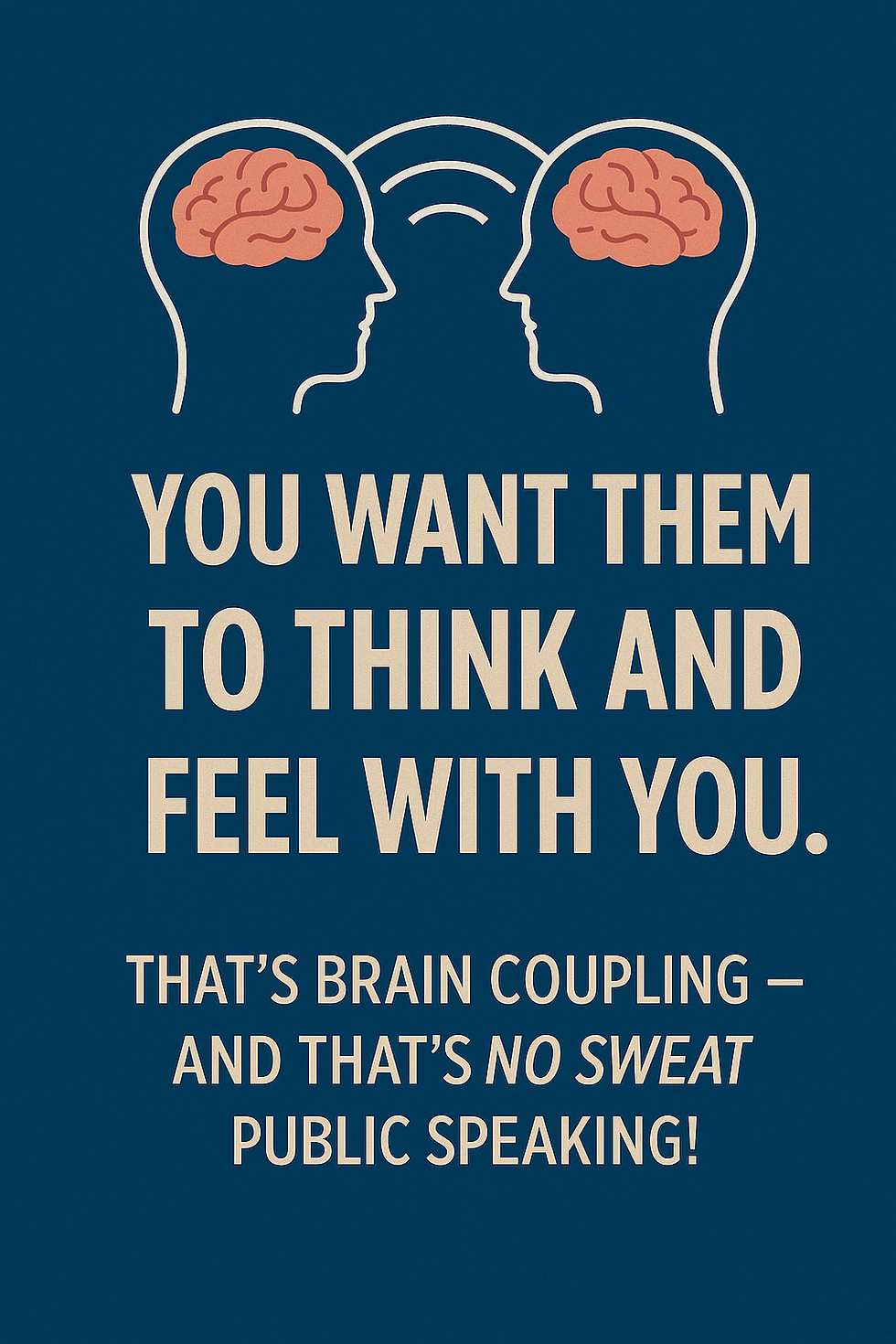Non-Verbal Communication Element #4 –<br> Posture
- Fred Miller

- Mar 11, 2010
- 4 min read
There’s one chance to make a first impression!
You’ll make that impression on the audience as the master of ceremonies ends their introduction and you start walking to the lectern, X spot, or wherever you’ll speak the opening words to your talk.
Walk with deliberate steps that give the non-verbal message to your audience that you are about to ‘take over’ the meeting, and will ‘be in charge’ during your turn at the lectern.
Do this with your shoulders straight and your head held high.
Be aware, you may make that first impression earlier if you’re seated, before being introduced, when you’re visible to the audience.
Important: If you’re a scheduled speaker, consider yourself on stage – even when you’re not! Especially if people can see you, be certain to sit with good posture; back straight, feet planted on the floor, and arms relaxed on your lap. No slouching!
Be attentive, and look at the other speakers during their presentations. Don’t do any fidgeting or reading of material while others are taking their turn at the lectern.
When you arrive at the spot where you’ll begin your talk, pause for a moment, look out and briefly survey the audience, find one of the friendly faces of someone you met when you arrived early to ‘meet and greet’ – then speak your opening words.
Your feet should point straight ahead, about shoulder length apart.
Your Posture is important and coveys a message.
Good, straight Posture indicates leadership and confidence.
It tells the audience that you are in control. It conveys the message that you have confidence in your competence.
Leaning slightly forward shows the audience you care.
Slouching to one side delivers the opposite message. It shows disinterest.
Hunched shoulders indicate lack of confidence and possibly low self-esteem.
For an emotional speech, try puffing yourself up. We do that when we’re feeling aggressive and ready to fight. (You’ve probably seen different animals do this, haven’t you?)
If you want to feel relaxed, assume a Posture that reflects that feeling. (This, combined with some deep breathing will relax you!)
Some Dos and Don’ts about Posture:
Don’t jingle!
Putting one or both hands into your pockets and jingling loose change or keys is a nervous habit some people fall into.
It’s distracting to the audience and takes away from your message.
A good tip is to leave change, keys and everything else you normally carry in your pockets, somewhere safe when you’re speaking.
Don’t fidget.
Even if your hands are not in your pockets, don’t rub nails or fingers together or any engage in any other type of fidgeting.
No Fig Leaf stance.
Hands crossed in front of you at the crotch, or over your rear end, or anywhere else, indicates a non-openness.
The military ‘At Ease’ position, crossing your arms in front of you or clasping hands in front or behind you are also to be avoided.
Don’t rock from your heels to your toes.
This would be very distracting to the audience, and interfere with your message.
Don’t sway!
I remember one of my Toastmasters Meetings where the speaker was a college professor. Delivering his speech from behind the lectern, he swayed from side to side. I was his Evaluator that evening, and I started off mimicking his swaying and asked, “Michael, did you ever spend any time on a ship?”
Important: I would not have made this remark had I not known Michael well. He was an accomplished and experienced speaker who just got into a ‘silly groove’. Like most Toastmasters, Michael attended meetings and regularly spoke to improve his talks. He sought productive feedback.
Don’t lean on the lectern.
It conveys too relaxed of an attitude and gives the impression that you don’t care.
Don’t cross your arms.
People do that when they are feeling defensive. Be especially aware of this during your Q&A session. If you do this, the audience will pick up on it, and it is not the message you want them to receive.
Do hold your head high and your chin slightly up.
This gives the audience the impression that you’re in control. (Watch clips of President Obama for good examples of this.)
Don’t look down,
I know, I know – that’s where your notes are!
Try to briefly glance to check your note, then look at the audience. this is one more reason to use a Mind Map, with pictures and symbols, rather than ‘linear notes’ to deliver your talk.
Good posture should be natural and relaxed, not stiff and tense. As with all other elements of your speaking, verbal and non-verbal, it takes practice.
Practice in front of a mirror, ask friends to critique this non-verbal part of your talk, and look at your posture on videos of your talks.
– – – – – – – – – – – – – – – – – – – – – – – – – – – – – – – – – – – – – –
OK. The master of ceremonies just finished introducing you.
Now, it’s Your turn! Rise from your seat, stand tall and walk deliberately to stage center. Stop. Pause. WOW them!
About the Author: Fred E. Miller coaches, speaks and writes about Public Speaking and Presentation Skills. 314-517-8772 Fred@NoSweatPublicSpeaking.com https://nosweatpublicspeaking.com
#CommunicationSpecialistStLouis #PresentationCoachMissouri #NonVerbalCommunication #Communication #PublicSpeakingCoachMissouri #SpeakertrainingstLouis #PublicSpeakingStLouis #Speaking #NoSweatPresentations #StLouisSpeakingCoach #SpeechLessonsStLouis #Presentations #StLouisSpeaker #OpeningaSpeech #presenting #CommunicationsSpecialistStLouis #PublicSpeakerStLouis #SpeakingCoach #speech




Comments